Wednesday, November 28, 2007
Mt Haleakala, a 10,000' tall volcano on Maui
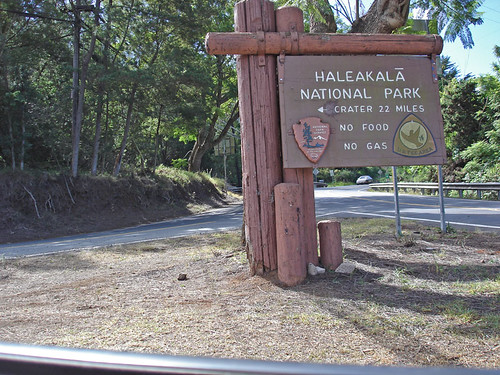
This first photo was taken by Pat as we turned off the main road to start up the mountain itself. From here on it is up.
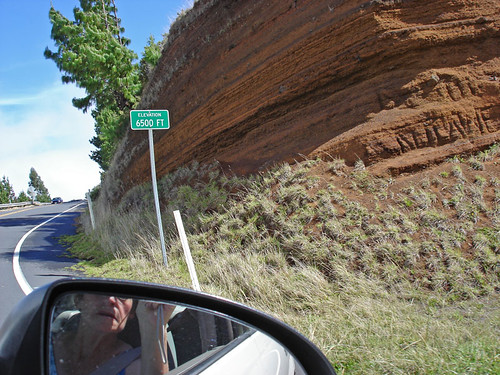
This is at the 6,500' level. It is a little over half way up to the top but to put it a little in perspective, it is about 1,000' higher than anything that is east of the Mississippi River in the USA. As you can see the plants are still pretty much what you would expect although nothing like the lushness found at the lower elevations. You can also see clearly how red the soil is here. That is pretty much true all over the Island.
The crater near the top is very impressive. The absolute highest point is not in the crater and the best place to view the crater is not at the highest point. There are a group of observatories that have been built near that highest point but they are not open to the public. The best crater views are at the Visitor Center which is located about 250' below the highest point.
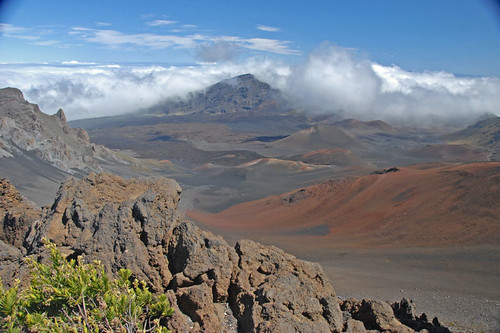
Here is a part of the crater. It is quite large and I could not get a single view in one photo of the whole thing, even while using an 18mm lens. The colors of the rock are amazing as is the blueness of the sky. When you are this high the air is thin and the sunlight very intense. You are looking down on the clouds. Many people will develop high altitude sickness and have to go back to lower levels. It is a stark world, unlike anything I have ever seen anywhere else. The deserts of the west are stark but nothing like this.
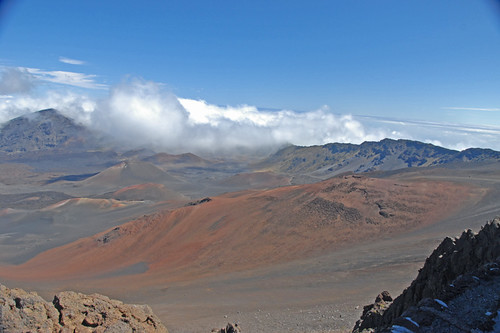
This view is from the same location as the last one but the camera has been turned to the right. The peak that is in the center of the previous photo is at the left side of this one. The red colored hill in the center can also help to orient you.
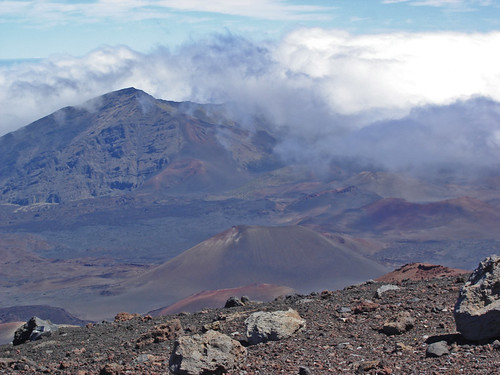
Another of Pat's photos with the Sony camera that is of the same place but with a different lens. You can see that we are really looking down on the clouds, even some that are inside the crater of the volcano.

I have zoomed to a telephoto view to bring part of the crater in closer. You can recognize that red hill.
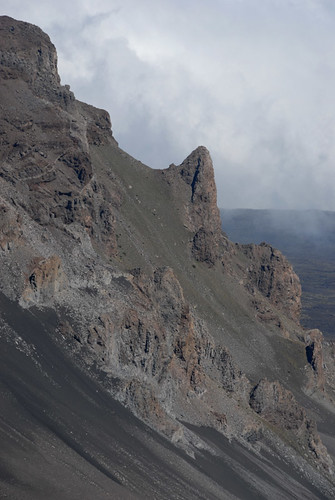
Another telephoto view, this time showing the rocks at the left side of the crater as we were viewing it. I need to go up to Washington State's own Mt. Saint Helens to check and see if our volcano scenery is about the same. I would guess they are a lot alike.
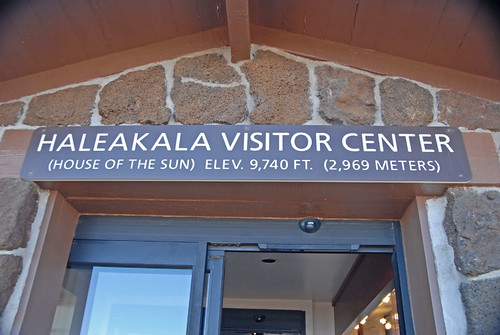
The entrance to the Visitor Center at the edge of the crater.
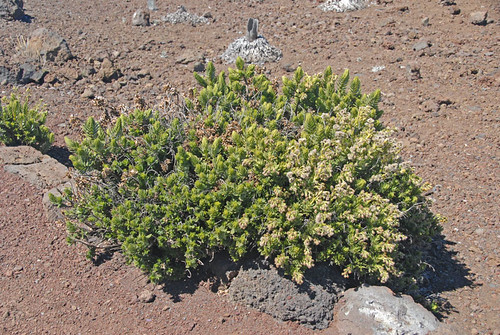
There are very few plants that can grow and survive in this environment. These bushes are one of them. The sun light is very intense due to the thin air. The wind blows all the time and it is cold, at least for Hawaii.
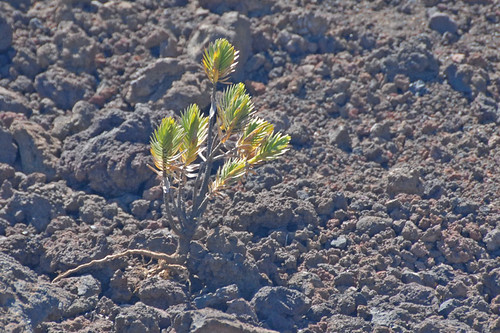
Another plant that has adapted. Notice how the roots travel along the surface of the rocks as they cannot penetrate the solid rock.
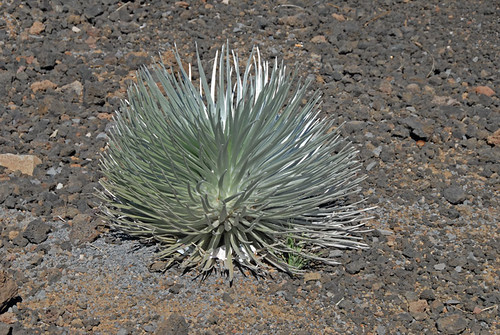
The most unique plant up there is known as a Silver Sword. As I understand it, this is a young one that has not yet "raised it's sword."
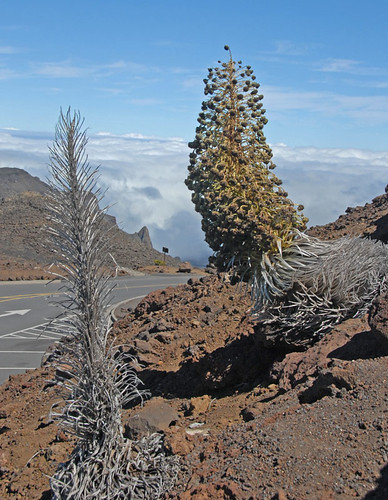
Here are two of them with their swords raised. The nearest one is nearly finished with its life cycle while the farther one is flowering now.
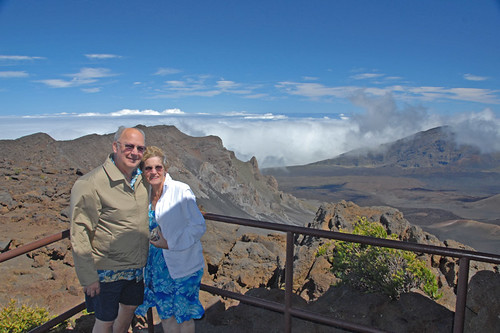
We asked another visitor to use my camera and take this photo of us with the crater behind. You can get a feel for how cold we were! Remember, it was 87 degrees down in Kehei where we started this trip from!
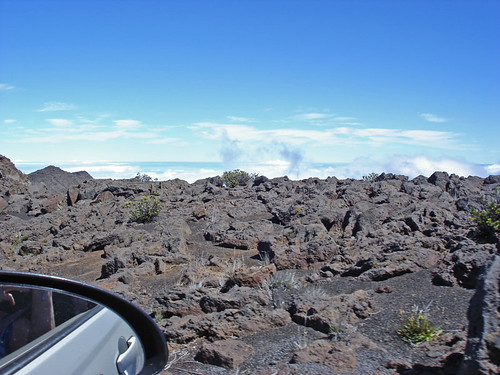
Another of Pat's photos taken while we were driving back down. This is a good example of the terrain near the top. There are a lot of rocks and very little foliage.
Mount Haleakala is a fascinating place to visit. It is well laid out for tourists and has a lot to see that you will find in very few other places.
Labels: Flowers, Hawaii, Photos, Trips to see things
http://smg.photobucket.com/albums/v146/Judles/public%20videos/?action=view¤t=dickpano.jpg
If you'd had more I could have stitched them all together for you!
Maybe this one will work?
http://smg.photobucket.com/albums/v146/Judles/public%20videos/?action=view¤t=dickpano.jpg
<< Home

